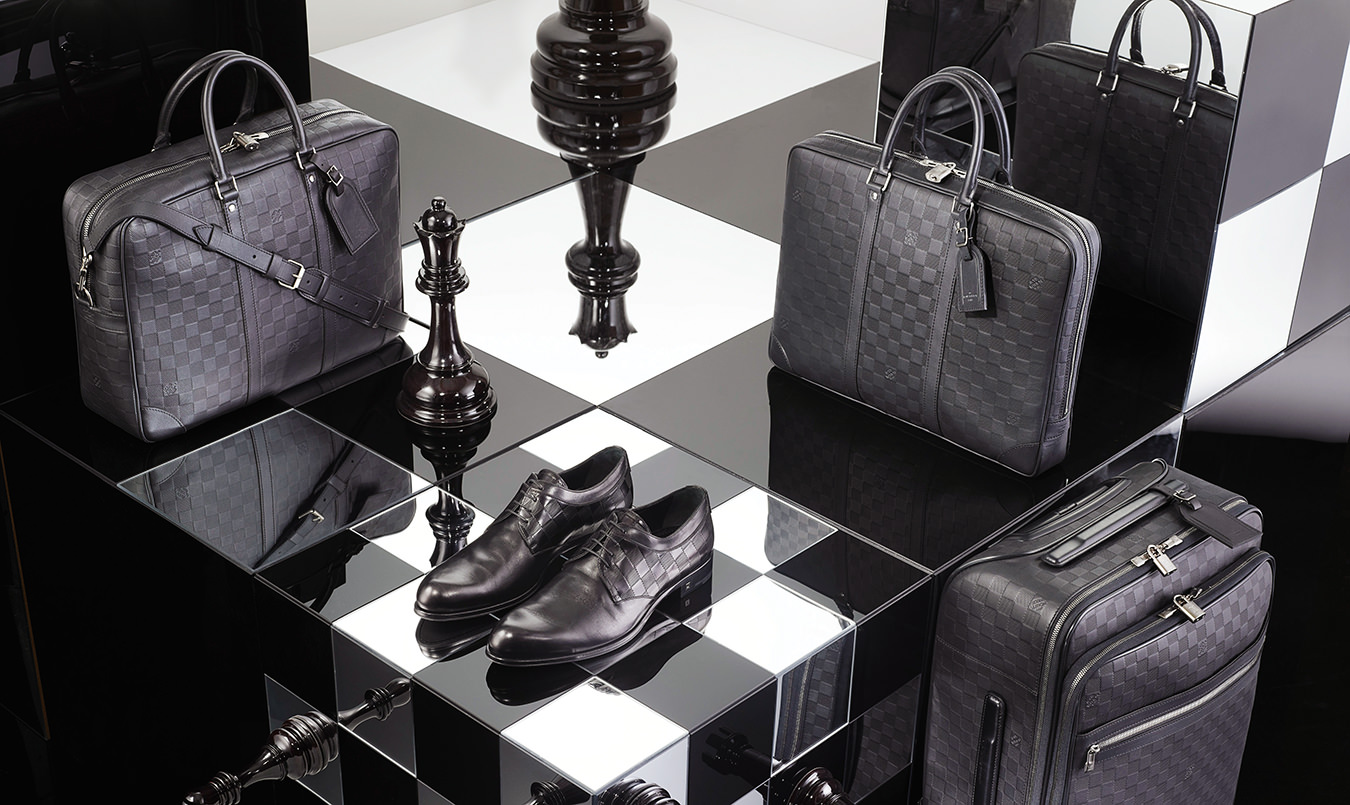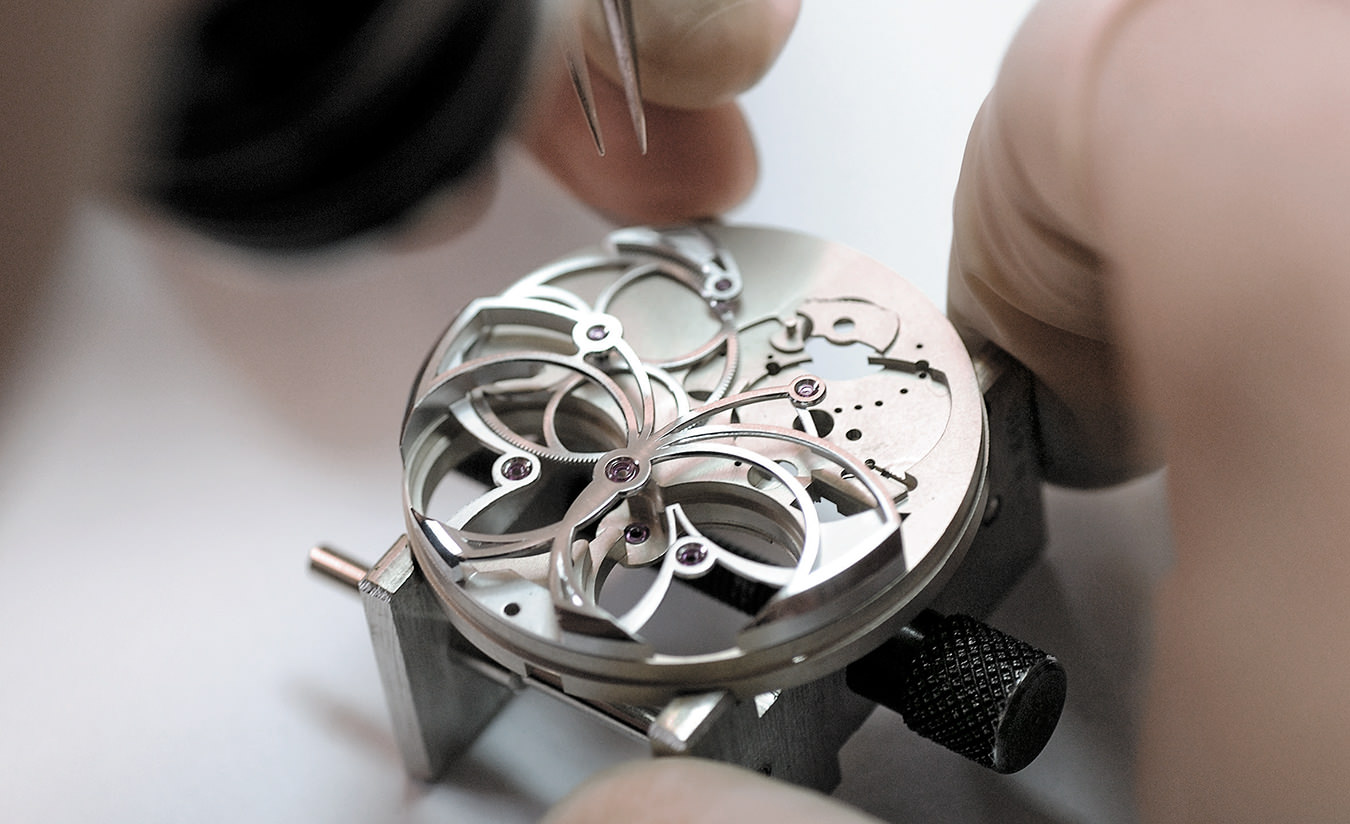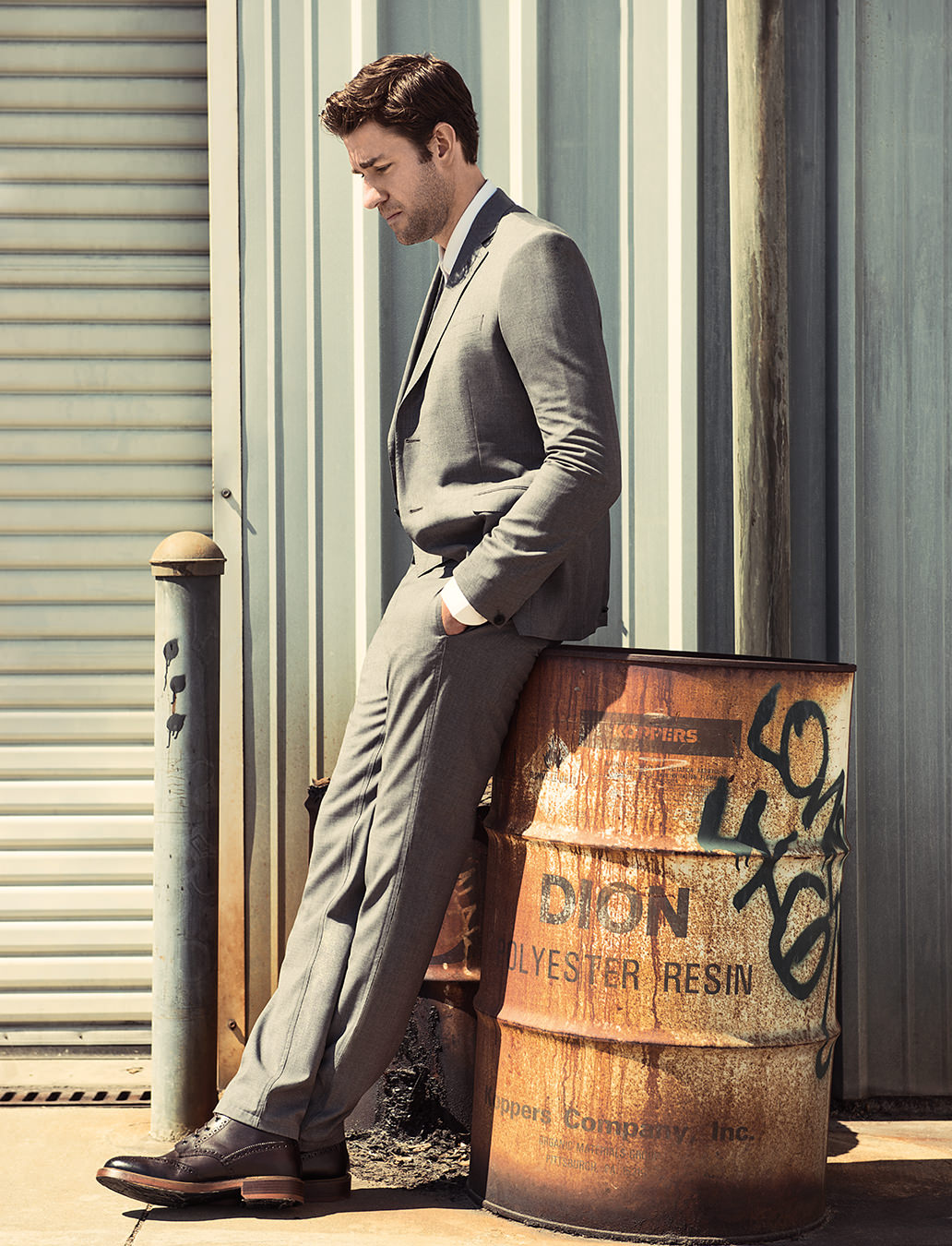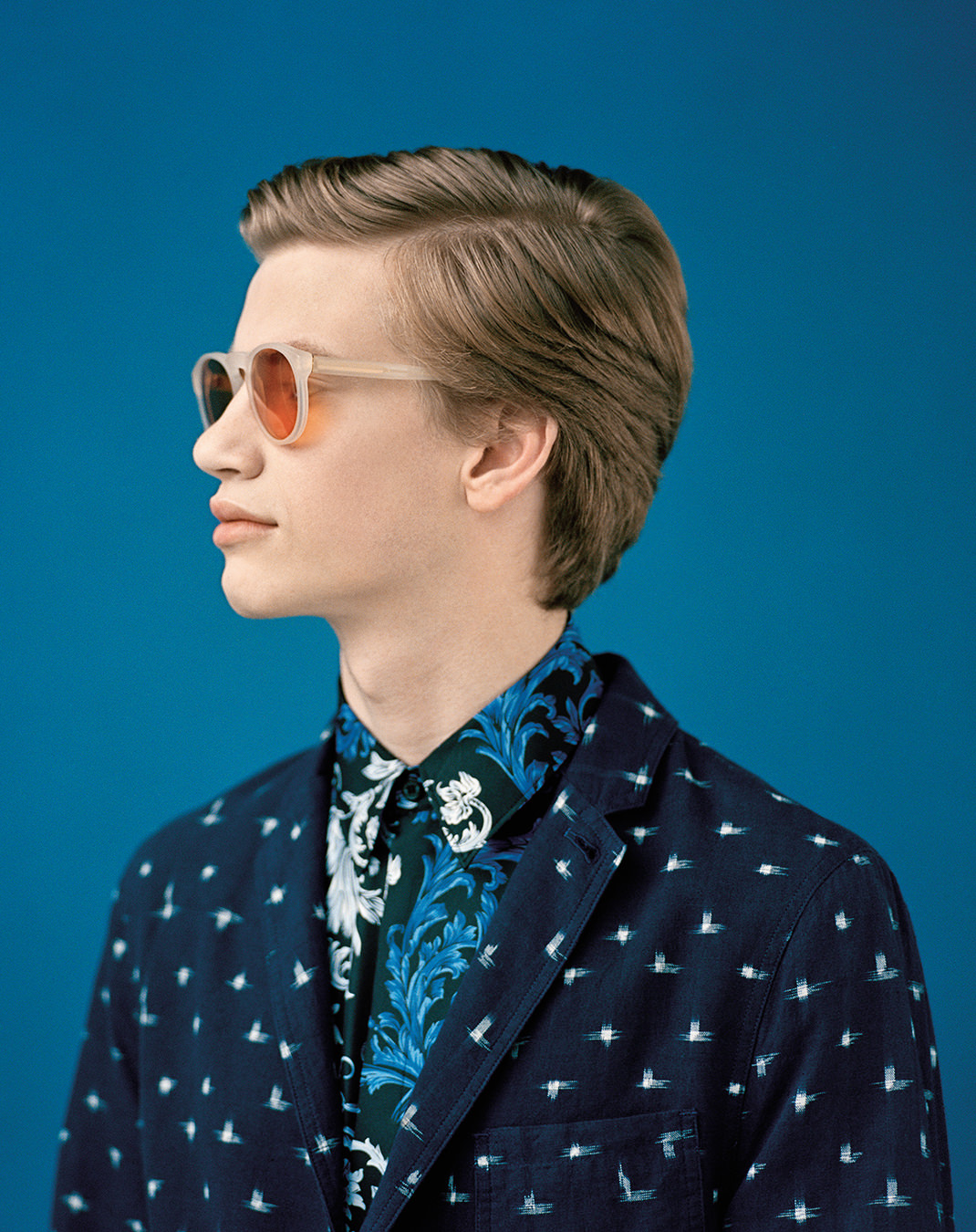-
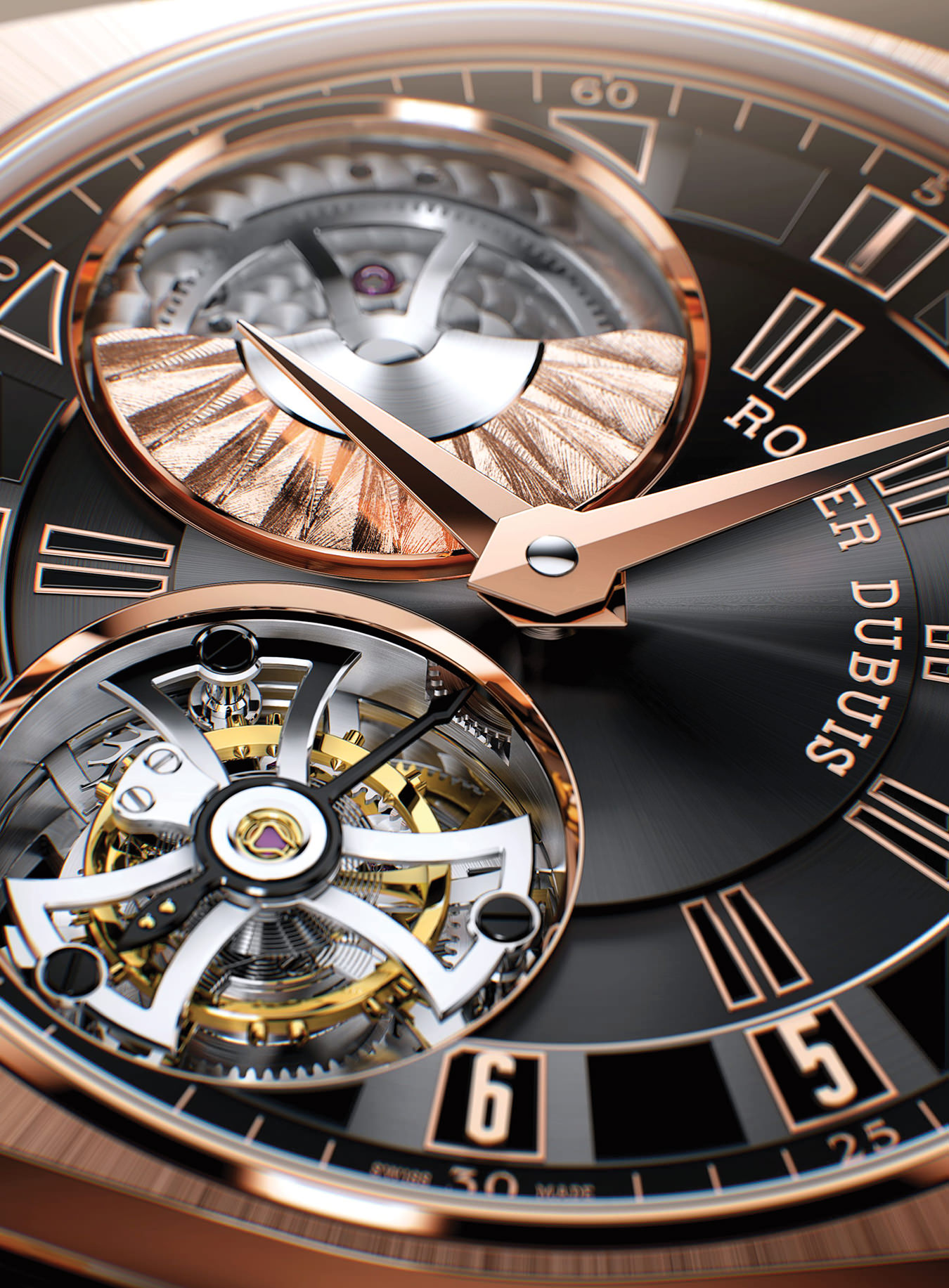
The Roger Dubuis La Monégasque. This timepiece showcases three important signature features of maison Roger Dubuis: the flying tourbillon, the visible microrotor, and the Poinçon de Genève quality hallmark.
-
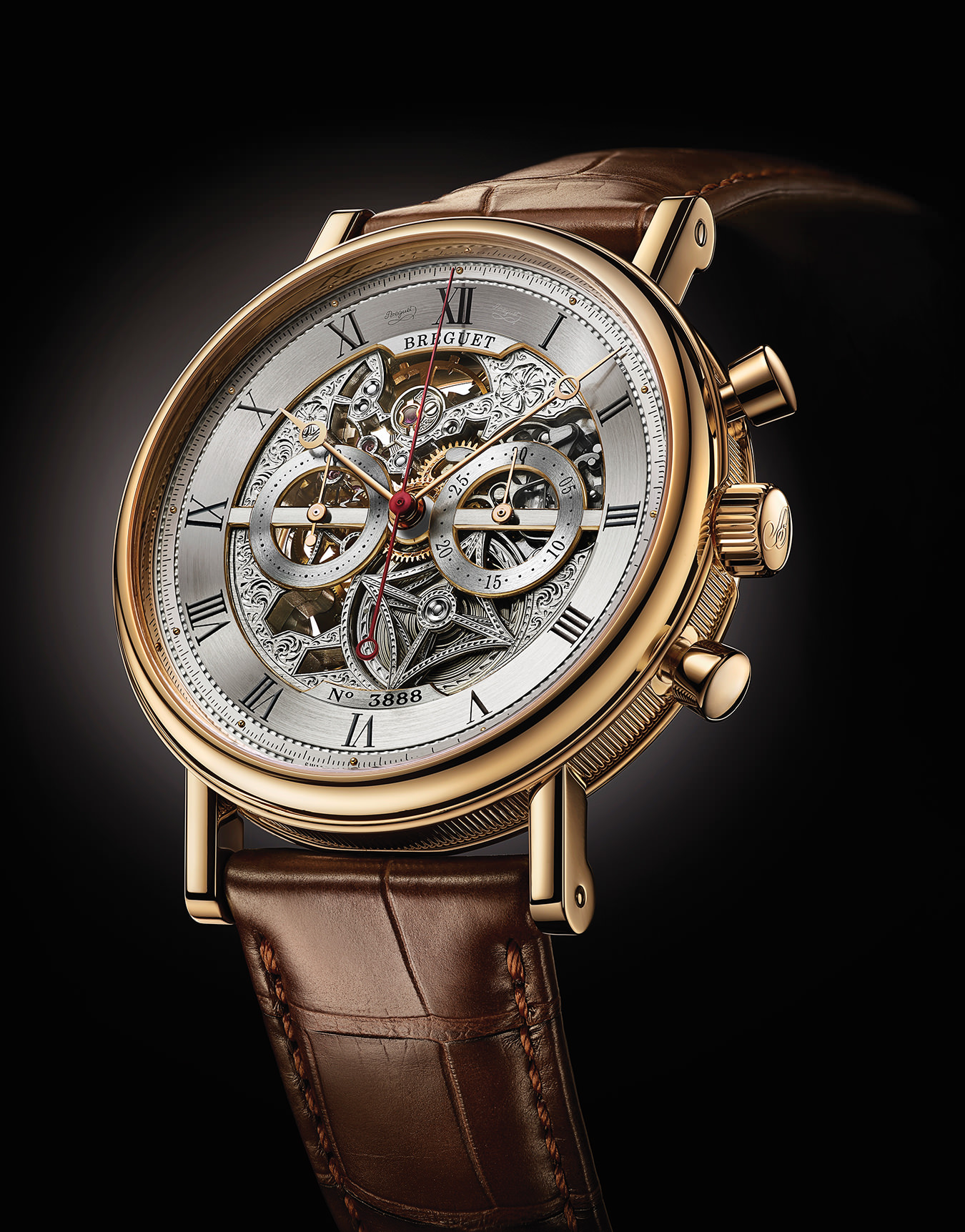
The Breguet Classique Chronograph. The case 5284 in 18-karat yellow gold is decorated with fine fluting on the case band, reflecting Breguet’s first timepieces.
-
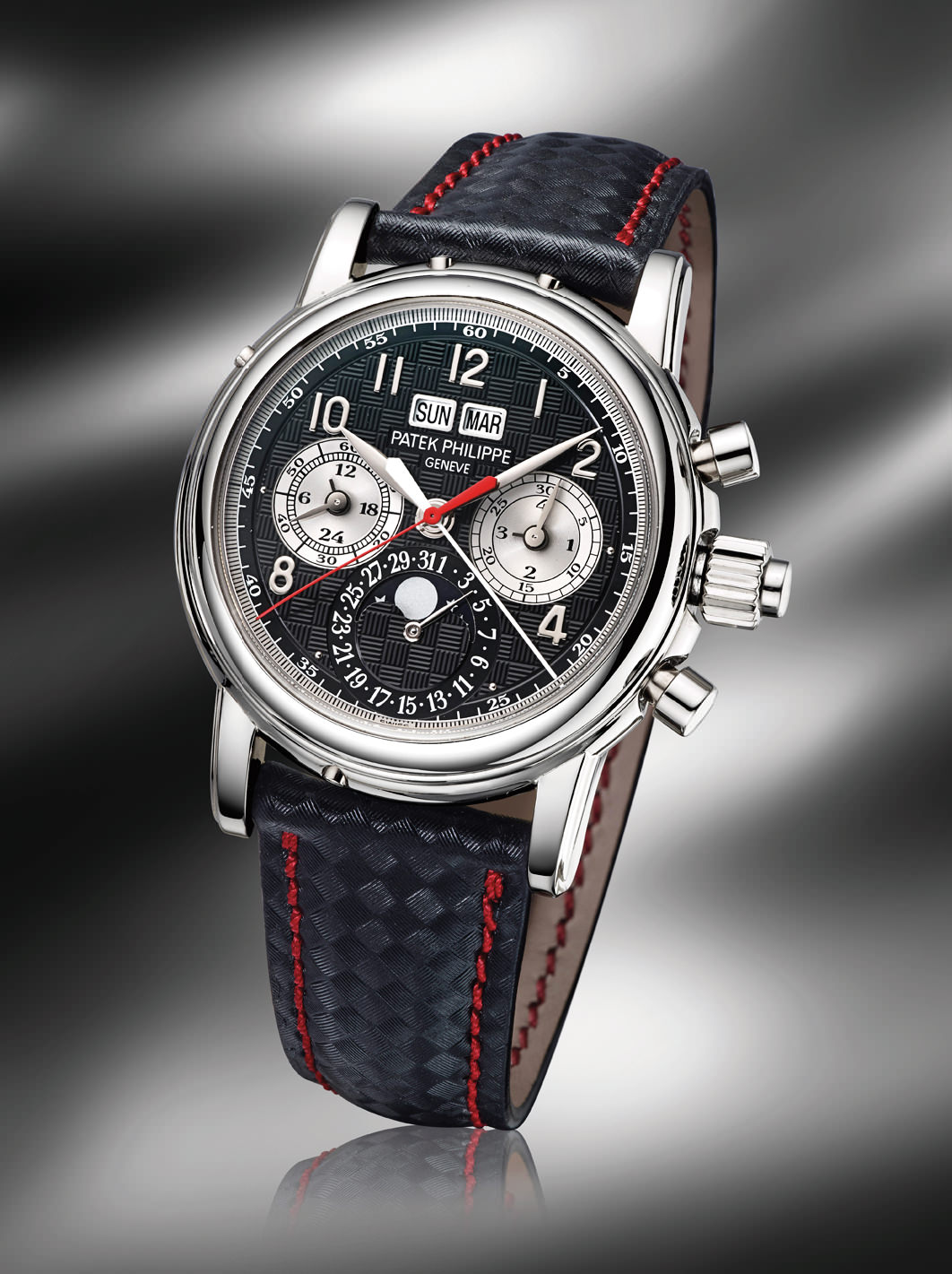
The Patek Philippe Only Watch 2013 special Reference 5004T. The movement comprises 407 parts and is the first and only version ever produced in titanium.
-
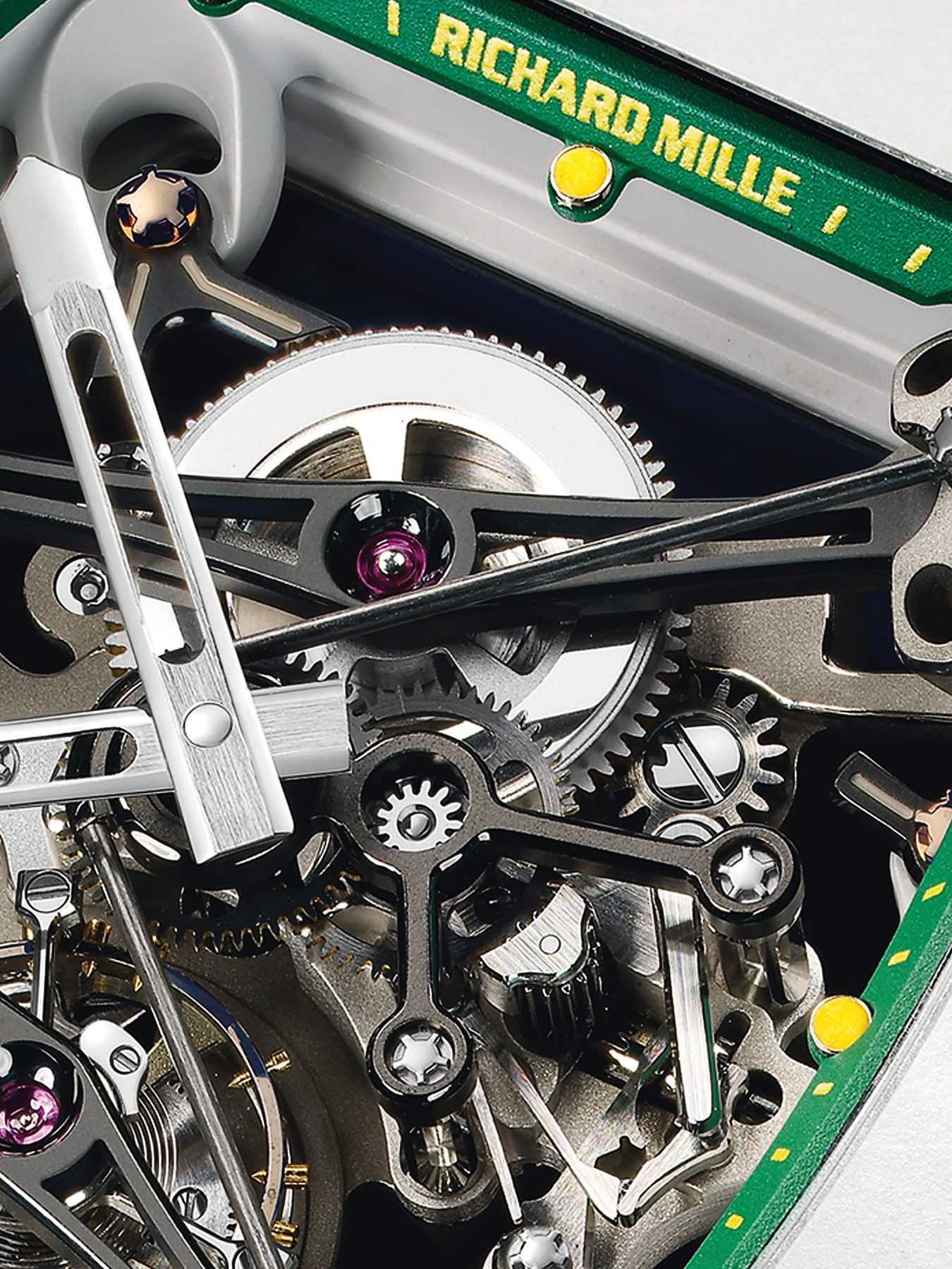
The Richard Mille prototype for the RM 59-01 Yohan Blake tourbillion. This timepiece is based upon the RM 038 but adapted to Yohan Blake’s specifications.
Monaco’s Only Watch Auction
Watch this.
In the world of fine watch auctions, a collective holding of breath is par for the course when a rare Patek Philippe timepiece is on the block with bids heading rapidly skyward. And Julien Schaerer, managing director of the specialist auctioneer Antiquorum in Geneva, has presided over more than a few such occasions. Among them, one stands out: the selling of Reference 3939A, Patek Philippe’s contribution to the 2011 Only Watch auction.
“I opened the bidding at €300,000, and it took off,” says Schaerer. “As the price kept rising, I remember thinking, this is exceeding all my expectations—and I knew it had gone past what the collectors and even Patek Philippe had thought likely. Eventually, we made €1.4-million. It was very emotional, especially to think that it was all going to charity.”
Remarkable prices have been a feature of Only Watch since the biennial charity event began in 2005, with pieces by Patek Philippe and DeWitt repeatedly topping the list. One-off Richard Mille watches co-designed with Philippe Starck in 2005 and 2007 sold for €285,000 and €320,000, respectively. Another, was not even a physical watch, just the promise of one, bought sight unseen and to be completed and given to the buyer six months later. That was DeWitt’s Incognito 2008 concept watch, co-designed by Jérôme de Witt and the architect Jean-Michel Wilmotte, and it sold for €400,000.
Many of the timepieces have fetched prices well above expectations. (There is no reserve price, simply a sum that the watch company hopes will be achieved.) Even in 2009, with the global financial crisis biting hard and Only Watch achieving what several watch writers described as “lukewarm” results, the auction raised almost €2.3-million. It’s hard to imagine any other fundraising event where such a sum would be considered lukewarm; nevertheless, it was dwarfed by the €4,563,000 raised in 2011. There is no reason to expect any less of this year’s auction, which will be held in Monaco on September 28 during the Monaco Yacht Show, after the collection has toured to Tokyo, Singapore, Hong Kong, Shanghai, Beijing, New York, and Geneva.
It’s a tremendous achievement for a fundraising event held in the tiny principality of Monaco on behalf of a local charity, Association Monégasque contre les Myopathies (the Monaco Association Against Duchenne Muscular Dystrophy), and started for deeply personal reasons. AMM’s founder, Luc Pettavino, was the director of the Monaco Yacht Show when his son, Paul, was born and subsequently diagnosed with Duchenne muscular dystrophy. Named after Guillaume Duchenne, the 19th-century French neurologist who identified it, DMD is a devastating genetic disorder, primarily found in boys, that causes progressive weakening of the muscles and is almost always fatal in early adulthood.
Through the Monaco Yacht Show, Pettavino’s talent for building big things from small beginnings was evident: what had started in 1990 as a small show for very large yachts has blossomed into the world’s leading event for the superyacht industry and, in the process, added significantly to the profile of Monaco. By common consent, after the Formula One Grand Prix, the Yacht Show is the most important event on Monaco’s calendar, establishing the principality as the epicentre of the superyacht business in the Mediterranean.
Spurred by his family hardship, Pettavino has applied the same energy to raising funds for research into finding a cure for DMD. He reached an agreement with the yacht show’s owners that AMM would receive 50 per cent of the revenue from entrance tickets, and he organized a series of fundraising events in Monaco over several years. Then he had his big idea.
“I realized that even though the €100,000 here, €200,000 there, that we had raised through different events up to 2003 was a lot of money, it could never take us to the level of supporting international research into muscular dystrophy,” Pettavino recalls. “I hugely admired the artistry and innovation that is poured into fine watchmaking and realized that there were a lot of very wealthy watch collectors in the world. So, I thought, what if we could arrange for the leading watchmakers each to create and donate a single exceptional piece to be sold at auction?” Pettavino recognized that watch companies have tremendous marketing and communications power that could be used to build global awareness of the auction, and in turn, the profile of the Monaco Yacht Show could be harnessed to the same ends.
“At the time, Blancpain was the watch partner of Monaco Yacht Show, and I went to Baselworld [watch and jewellery fair] and talked about my idea to Nicolas Hayek [the late founder of Swatch Group, which owns Blancpain],” says Pettavino. “He understood and liked it immediately, in effect saying that he believed that with Swatch Group showing the way, other brands could be brought together, and that we could count on his support. That was my green light.”
With Antiquorum overseeing the horological side of things, Prince Albert II of Monaco as the charity’s patron, and Pettavino unstoppable in persuading watch companies to participate (a condition being that watches had to be donated outright, so that 100 per cent of the auction price would go to the charity), the first Only Watch sale raised the equivalent of €1.9-million.
The €10-million raised since 2005 has been distributed between 15 international research partners, each a leader in its field. Among them is Luis Garcia, the pioneer of exon skipping, which, simply put, is a method used to cause cells to skip over faulty or misaligned sections of genetic code, leading to a truncated but still functional protein despite the genetic mutation. The funding has enabled Dr. Garcia and his team at the University of Versailles Saint-Quentin-en-Yvelines to accelerate clinical developments specific to Duchenne and its mutations, including live trials of exon skipping. In early 2010, the point at which Pettavino stood down from the Monaco Yacht Show role to dedicate himself fully to AMM, more than €3-million was distributed to these partners.
It’s difficult to judge the prices paid for such timepieces in relation to any established market value—past or future—but that adds to the interest.
“From now to the end of 2015, we have committed to another three to four million euros of funding to our various partners,” says Pettavino. To harness the research that the charity is helping to fund, last year AMM co-funded the establishment of Synthesa, a biotech company based in Bern, Switzerland, with the specific mandate to develop drugs for the treatment of neuromuscular diseases.
Paul Pettavino, today a bright and creative 17-year-old, remains the heart and soul of Only Watch. “I do believe that having him present makes a real difference,” says Schaerer. “It changes the charity from an abstract or theoretical exercise into something personal, immediate, and human.”
The scale of what is being achieved through Only Watch comes down to its unique profile as a charity auction, believes Schaerer. “This was the first auction of its kind, where 30 to 40 leading watch companies put their competition between each other to one side. Not only do they come together in pursuit of a shared goal, they are doing so in a very public arena, where everyone will know what price they are able to attract for their watch. That is extremely rare in this business.”
The brief to the watch companies is very open. However, there is one requisite: that the pieces be unique. The manufacturers are left to decide what they want to do. It has inspired the donation of some exceptional pieces. In 2011, Richard Mille gave the RM 027 that he made for Rafael Nadal, which Nadal wore when he won his seventh consecutive Monte-Carlo Masters earlier that year. Provenance of that kind cannot be duplicated, and it’s why timepieces with such connections command a premium from collectors, to the tune of €510,000 for the Mille/Nadal watch. Mille has gone one better with this year’s donation: not only is it the prototype for the RM 59-01 Yohan Blake tourbillon launched this year, but it is also the very watch that Blake wore on the track when competing at the London 2012 Olympic Games.
Other watchmakers take a particularly creative approach. Van Cleef & Arpels—which in 2011 raised €215,000 with its From the Earth to the Moon rendition of its double retrograde complication—this year reinterpreted its Lady Arpels Une Journée à Paris in the form of Une Journée à Monaco. Its marine colour scheme and delicately sketched background of the principality depict a stroll along the Monte Carlo seafront.
Indeed, references to Monaco occur frequently. Hublot is using Only Watch as the launching pad for a technical breakthrough: the development of a vivid-red high-tech ceramic (which happens to be very close to the red on Monaco’s coat of arms) for the bezel of a Classic Fusion watch, contrasting with the black ceramic case and complemented by red accents on the skeletonized movement. In a different vein, the dial of Chopard’s superb L.U.C Tourbillon is hand-engraved with the Monaco coat of arms, nicely accompanying the platinum case and the engraving on the movement (using the rare Fleurisanne technique), which depicts a DNA chromosome—a reference to the root of Duchenne muscular dystrophy.
Others make allegorical reference to the charity. Corum has created a special red-gold and titanium case for its Ti-Bridge 3-Day Power Reserve, the contoured case band bearing a hand-engraving of Asclepius and his snake-entwined staff, the symbol of medicine. Jaquet Droz’s Loving Butterfly, with its miniature painting of a cherub riding in a carriage pulled by a butterfly, combines symbols of childhood and the power of dreams; in the background is a delicate sketch of the palace of Monaco. Anchoring the connection with childhood, Julien Coudray 1518 asked children at a nursery school in the watchmaking town of Le Locle to “draw a happy child” and chose one of the sketches to decorate the main plate of the movement. The watch case, dial, and movement have been made from a one-kilogram bar of 18-karat white gold. Louis Vuitton has taken the connection with childhood even closer to the charity. Since 2007, the company has invited Paul Pettavino to help design each watch that it donates. Paul’s favourite colour, orange, has provided the theme on three occasions, while this year he asked the designers to include a sailing boat, crafted in enamelled gold and applied to the blue dial of a Tambour Spin Time Regatta model.
Such creativity suggests that despite setting their competition aside for Only Watch, the participating companies want to raise their game in relation to their peers. Schaerer agrees: “I think this is also because, in the past, some that have not been creative enough have been reminded of the fact by the prices paid for their pieces.” The public nature of the sale must have made for some very uncomfortable moments for those concerned.
Interestingly, it has often been the smaller watch companies that demonstrate the greatest imagination. Possibly the most exciting timepiece on offer this year is X-Trem-1 Pinball by Christophe Claret, a watchmaker whose entire career has been marked by astonishing technical virtuosity combined with visual surprise and delight. Claret’s reinterpretation of his celebrated X-Trem-1 has been designed to celebrate the theme of play, and it takes its cues from a pinball machine, with tiny metal balls moving within sapphire crystal tubes to indicate the hours and minutes. The movement has been reworked to look like the bumpers, slingshots, and balls inside a pinball machine, and the orange and blue colour scheme gives it a vivid aesthetic.
Schaerer acknowledges that it’s difficult to judge the prices paid for such timepieces in relation to any established market value—past or future—but, he says, that adds to the interest. “Because these are unique pieces being sold for the first time, part of the excitement is in seeing which will be the home runs.”
If not one of the models already mentioned, could this year’s big hit be the El Primero Stratos Flyback Striking 10th Tribute that Zenith used as its prototype to develop and test the timepiece that daredevil Felix Baumgartner wore for his leap from the edge of space? Or the first example of the second version of Laurent Ferrier’s Galet Classic, presented with a beautiful pink-sand-coloured dial hand-painted with a stylized dove to represent freedom? Or perhaps it will be Blancpain’s beautiful Women, Only Watch 2013, where a dove is rendered on the dial in mother-of-pearl marquetry and appears again on the hand-engraved oscillating mass of the self-winding movement?
It’s impossible to guess. But given the beauty and technical mastery embodied in the watches, the extraordinary amount of money raised, and the advances already being made in research, a comment that Luc Pettavino made several years ago has particular resonance: “This whole event has been overwhelming from day one. I felt it right away. The energy in the air was—if you do it they will come.” He did, and they have.

